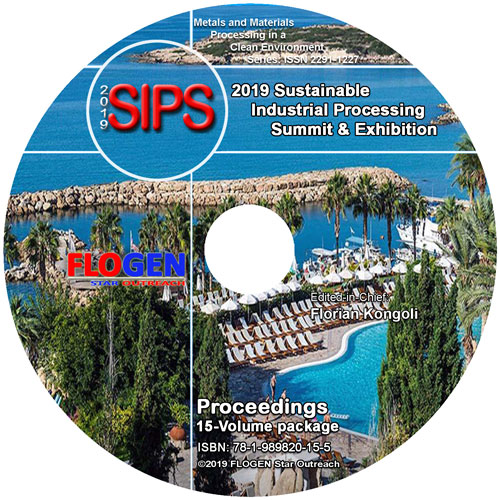2019-Sustainable Industrial Processing Summit
SIPS2019 Volume 8: Usui Intl. Symp. / Advanced Sustainable Iron and Steel Making
| Editors: | F. Kongoli, P. Assis, M.C. Gomez-Marroquin, S. Kitayama, H. Konishi, A. Murao, S. Nomura, H. Ono, H. Saxen, K. Seto, J.I. Tani |
| Publisher: | Flogen Star OUTREACH |
| Publication date: | 20 December 2019 |
| Pages: | 250 pages |
| ISBN: | 978-1-989820-07-0 |
| ISSN: | 2291-1227 (Metals and Materials Processing in a Clean Environment Series) |

CD shopping page
Effect of Ore Contraction Behavior on Permeability of Coke Slit Layer in Cohesive Zone
Kazuhira Ichikawa1; Toshiyuki Hirosawa2; Takeshi Sato3; Taihei Nouchi3; Kiyoshi Fukada2;1, Chiba, Japan; 2JFE STEEL CORPORATION, Fukuyama, Japan; 3JFE STEEL CORPORATION, Chiba, Japan;
Type of Paper: Invited
Id Paper: 87
Topic: 2
Abstract:
Recently, due to increases in the price of ironmaking coal, low coke rate operations in the blast furnaces have been necessary. Because coke works as a spacer in the blast furnace, however, low coke ratio operation causes deterioration of furnace permeability [1]. This is remarkable in the cohesive zone. The results of measurements of the shape of the cohesive zone in dissected blast furnaces revealed that the ore layer and coke slit layer were alternately layered [2]. Therefore, in the cohesive zone, gas is expected to flow horizontally along the coke slit layer. Thus, the permeability of the coke slit layer in cohesive zone is important.
The authors developed a new simulator called the Cohesive Zone Simulator for quantifying the effect of the coke slit layer thickness on permeability. The authors revealed that this is because of the decrease in void fraction of the coke slit layer, caused by the increasing thickness of the penetration layer of melting the ore layer [3].
On the other hand, the effect of ore melting behavior on the permeability of the coke slit layer was not studied enough. Ore properties, i.e. reduction ratio and effect on the melting behavior, however, are known [4].
Based on the background outlined above, the effects of the contraction ratio of the melting ore layer to permeability were studied by using the cohesive zone simulator.
Keywords:
Blast; CO2; Coke;References:
[1] M.Ichida, S.Matsuzaki, T.Tanaka and F.Koizumi: Tetsu-to-Hagane, 87(2001), 342.[2] Y.Togino, M.Sugata, I.Abe and M.Nakamura: Tetsu-to-Hagane, 65(1979), 1526.
[3] K.Ichikawa, Y.Kashihara, N.Oyama, T.Hirosawa, J.Ishii, M.Sato and H.Matsuno: Tetsu-to-Hagane, 102(2016), 1.
[4] T.Nishimura, K.Higuchi, K.Ohno and K.Kunitomo: Tetsu-to-Hagane, 102(2016), 61.